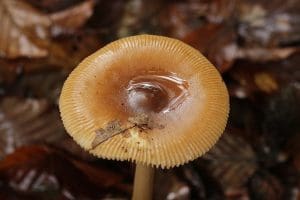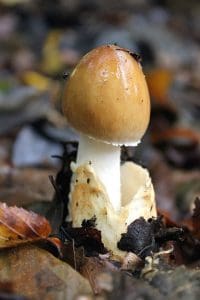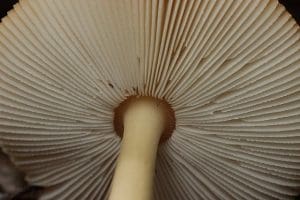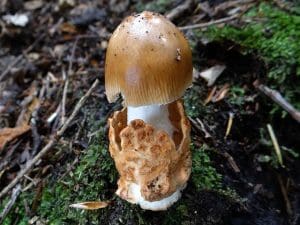Tawny Grisette Mushroom / Summer / Autumn / Edible
The tawny Grisette Mushroom is and edible (when cooked) mushroom we come across quite often in the summer mushroom foraging season and is a beauty to find. It does sit within the amanita family so is definitely worth being a little weary of when foraging, as there’s some deadly toxic mushrooms within this family.
Scientific Name
Amanita Fulva
Common Names
Tawny Grisette, Orange-brown Ringless Amanita
Family
Amanitaceae
Habitat
They are mycorrhizal with quite a few different trees including, oak, birch, chestnut, alder, spruce and pine. They’re most common on acidic soils.
Description
An edible member of the Amanita family, they can be confused with toxic species so care needs to be taken.
Video of Foraging Tawny Grisette Mushrooms
Identifying Features of the Tawny Grisette Mushroom:
Cap:
The cap is orange/brown tending to get lighter towards the edge. When young they are egg shaped, flattening out as they mature, they tend to develop a central umbo as they age which can sometimes be much darker in colour. Along the margin there are deep striations.

Stem:
They are fairly long up to 15cm, they are generally white to yellow in colour. At the base there is white sack like volva structure. They also lack a ring unlike most Amanitas.

Gills:
The gills are white, free and crowded. Some of the gills will terminate before reaching the cap edge or stem.


Smell:
Mushroomy.
Spores:
White.
Uses
In food
They must be thoroughly cooked before consumption. They do contain some toxins but these are destroyed by heat.
The taste and texture are pleasant but due to the risk of confusing them with deadly Amanitas, they’re not very often collected.
Harvesting
Not for the novice. Only experienced or stupid foragers collect ring-less Amanitas. They can however be found in large numbers in the woods of North West England.
Known hazards
They must be thoroughly cooked before consumption.
Potential lookalikes
Other Amanitas, some of which are deadly poisonous. But they all tend to have rings on their stems.
Other ring-less Amanita’s that look similar are the:
Orange Grisette (Amanita Crocea) but this has a more orange coloured cap and has a zig-zag pattern on the stem.
The Snakeskin Grisette (Amanita Ceciliae) is also similar in appearance but again this has a snake-skin, zig-zag pattern of scales of the stem.
The Grisette (Amanita Vaginata) looks very similar, in fact for a long time they were classed as the same, but Vaginata tends to be darker in colour. All three are edible when cooked.







Leave a Reply
You must be logged in to post a comment.